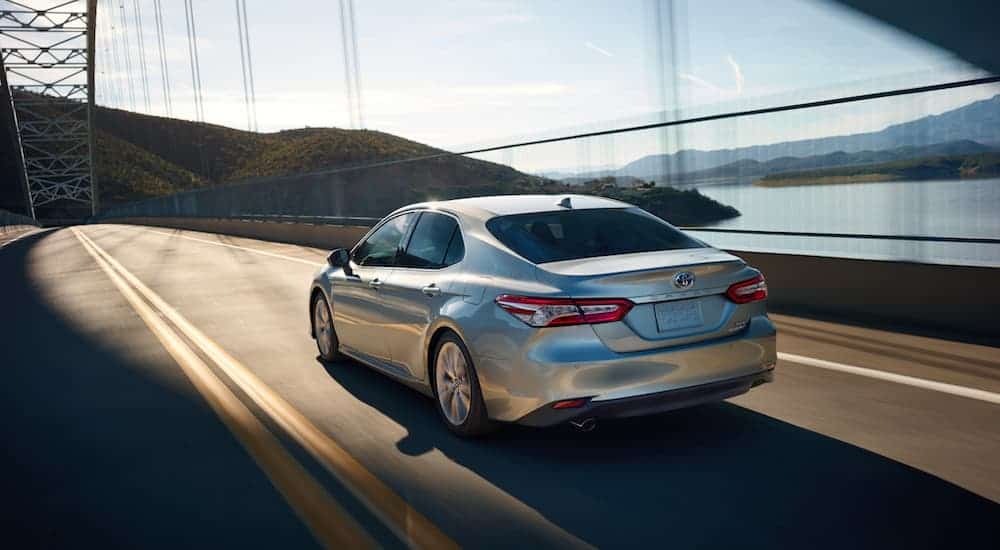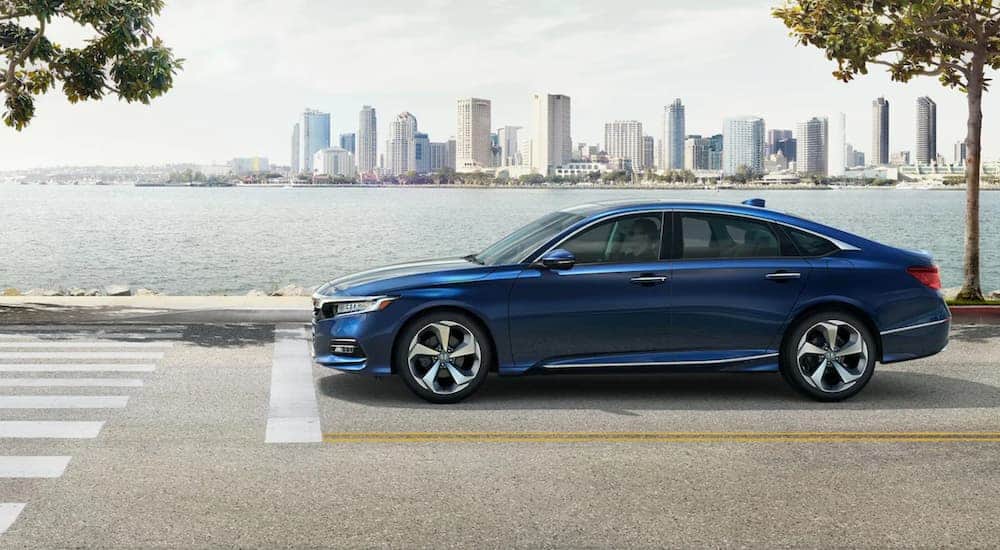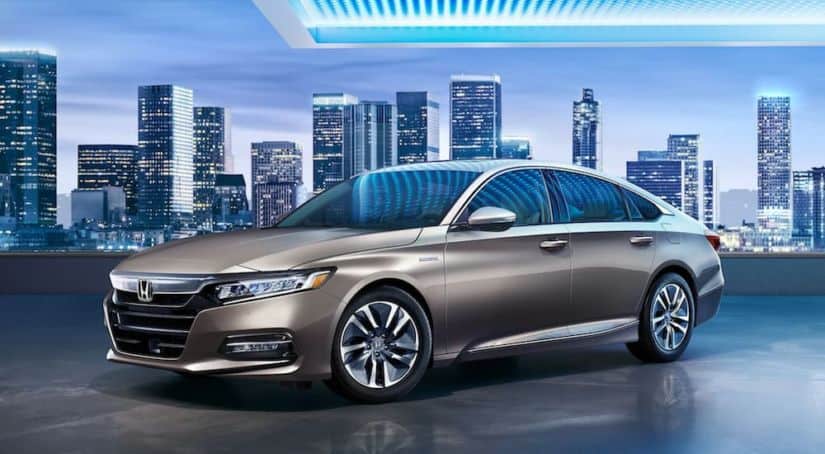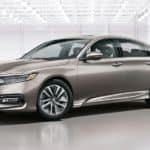One of the most fascinating happenings in the automotive industry is when two vehicles are placed into similar price ranges, ultimately sparking a competition between two manufacturers. And not only are these competitions fascinating, but they are indicative that drivers are being given plenty of options in the market. Everybody likes having options, but for purchases with as much commitment behind them as a new automobile, you are going to want to have a clear understanding of what you’re getting from each competitor. This understanding is a crucial component of the bustling market in which the customer always gets the best possible outcome. And this idea of pitting two vehicles next to each other who share a similar price range is exactly what we get when we put the 2020 Honda Accord vs 2020 Toyota Camry.
For starters, the Accord and Camry offer a host of mutual features seen across the board and a few key differences that aim to contrast the two. Both of these selections are midsize sedans, each with a history on the market spanning decades. And although these two are similar, they are not identical, starting with price. The base trim for the Accord starts at an MSRP of $24,020, while the Camry’s MSRP is slightly higher at $24,425. That is not a huge difference, but it is a difference at that. And there are some other differences that are quite significant; we are going to look at those now.
Performance & Efficiency

The performance of these two vehicles is generally similar, but what is not so similar are the powertrains in which these vehicles are built with. Both the Accord and Camry offer you two engine choices, but the main thing that differentiates the two vehicles from one another is that the Accord has turbocharged engines. So let’s take a look at how these engines perform and compare.
The base engine in the Toyota Camry is a 2.5L 4-cylinder engine that comes in two variants producing 203 to 206 hp and 184 to 186 lb-ft of torque, respectively, but both paired with an eight-speed automatic transmission. In terms of fuel efficiency, this engine gets EPA-estimated ratings of 29 MPG in the city and 41 MPG on the highway. Although this is certainly not a lackluster engine, it does help shine a light on how Honda’s application of turbocharged engines has been a respectable effort resulting in similar performance metrics.
What a turbocharged engine can achieve has become far more prominent in the modern era. The base turbocharged engine is a 1.5L 4-cylinder that produces 192 hp and 192 lb-ft of torque. Although horsepower output is slightly lower, it is nevertheless impressive that such a small engine can provide even more torque than Toyota’s base offering. This engine is paired with a continuously variable transmission (CVT), which is a different setup than the 8-speed transmission on the Camry but is still automatic. And because of this entire setup, this small 1.5L engine achieves respectable fuel-efficiency ratings of 30 MPG in the city and 38 MPG on the highway, which keeps pace with the Camry quite well.
When looking at the engine upgrades, we see a similar trend of performance gains obtained through two very different powertrains. On the Camry, the next engine is a 3.5L V6 that produces 301 hp and 267 lb-ft of torque while achieving fuel efficiency ratings of 22 MPG in the city and 33 MPG on the highway, paired on that same eight-speed automatic transmission. On Honda’s side, the upgraded engine is another turbocharged variant, this one being a 2.0L 4-cylinder that produces 252 hp and 273 lb-ft of torque, paired with a 10-speed automatic transmission. Fuel economy is quite similar, again to the Camry’s at 22 MPG in the city and 32 MPG on the highway. Honda’s use of turbocharged technology is certainly not going to waste, and the performance output shown from smaller 4-cylinder engines is nothing short of amazing.
Enhancing Your Safety

Both Honda and Toyota have put significant attentive efforts towards ensuring the Accord and Camry come equipped with a bustling number of safety features right out of the gate. For starters, the 2020 Accord and Camry both come equipped with their own respective safety feature suites provided by their manufacturers. The Accord gets the Honda Sensing feature suite while the Camry gets Toyota Safety Sense-P.
These bundles share a lot of similarities, such as a rear-view camera that displays on the internal infotainment screen. Adaptive cruise control is available; this is a fresh take on the cruise control you may be familiar with as it now predetermines the distance between your vehicle and the driver in front of you, and will adjust the speed accordingly. Lane-keep assist is featured in both cars and will provide slight corrections in your steering to ensure you stay within your lane, and should you stray from your lane, the built-in lane departure warning will let you know.
The similarities between these two feature suites do not end there as features such as forward-collision warning are present. This provides signals through visual and auditorial means in the event your vehicle is approaching another car in a way that may lead to a collision. Both vehicles also include automatic high-beam headlights that will dynamically power on and off, turning on when you need extra visibility at night and turning off to prevent obstructing the vision of any oncoming drivers. Forward automatic emergency braking is also included in both vehicles, which means the car will assist in applying the brakes to prevent impact if the driver hasn’t done so already.
Both the Accord and Camry have a few available upgrades that do not come standard, these being a head-up-display and rear-cross traffic alert, which has functions such as warning you of any vehicles passing by while you’re reversing out of a parking spot. And although both Honda Sensing and Toyota Safety Sense-P have a large number of similarities, the Accord does have some unique features. An example of this is the road departure mitigation feature, which helps to warn and assist you if the system detects the vehicle is steering towards the side of the road. Overall, it is great to see so many safety features, both standard and upgrades, for these two vehicles. But the Accord does have some extras that push it to the top of the competition.
Making Your Decision Easier
There is no doubt that both of these vehicles share a similar spot in the market and together, are a prime example of modern-day competition in the automotive industry. They have a remarkably similar setup to one another; this ultimately means that the cheaper 2020 Honda Accord doesn’t have to make any significant sacrifices to achieve its lower price tag. The Accord and Camry are also great examples of where these two manufacturers want to take these vehicles in the future with Honda emphasizing its turbocharged engines. And overall, the 2020 Honda Accord is the better choice for those looking for more space, fantastic performance, and a suite of safety features that rivals many of its competitors, all while paying an overall lower price.



